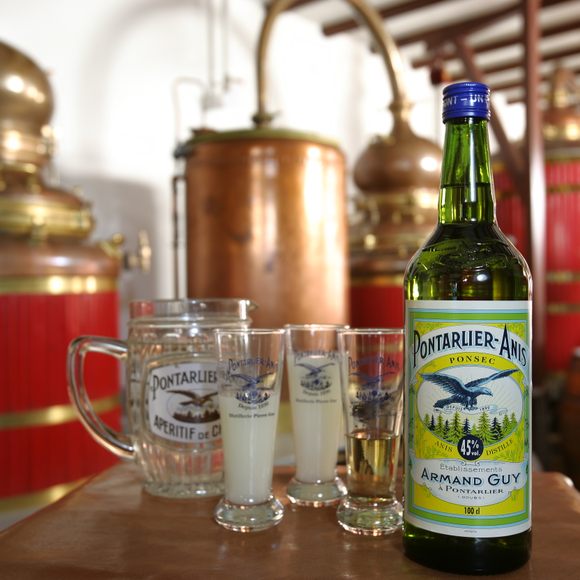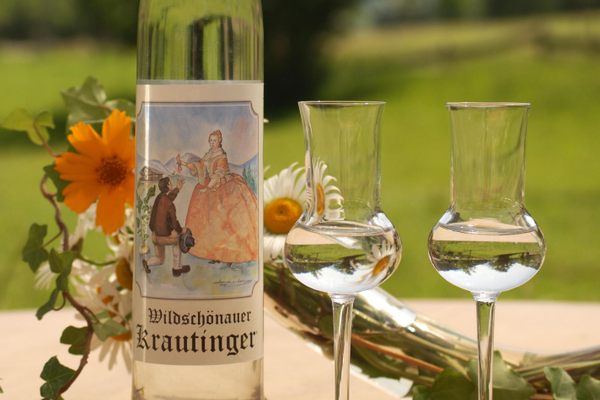Drinks
Pont
A town in East France still makes a beloved green-anise liquor born after the ban of absinthe.
In 1914, absinthe was outlawed in France. In the small mountain town of Pontarlier, the world capital of absinthe, the news devastated the livelihoods of thousands of local workers. Nearly all the town’s distilleries closed their doors or relocated. But one producer, Distillerie Guy, remained open, all thanks to adaptation and innovation. Its bestselling drink, Pont (formally known as Pontarlier-Anis), was created as a result of the absinthe ban and remains a beloved classic at the distillery to this day.
Pont was the invention of George and Armaund Guy, whose family distillery had been making absinthe since 1890. Following the nationwide ban, the distillers continued to use their absinthe recipe, with one key change: excluding the supposedly “madness-inducing” ingredient, thujone, and replacing it with green anise.
When poured, Pont is clear as the local mountain water it contains, turning to a cloud of white when diluted. It has a frosty freshness, not unlike the sensation of breathing after chewing on a mint, while whipping the tongue with a smooth licorice sweetness.
The licorice taste comes from the distillation of green anise, differentiating it from the star anise used in other anise spirits such as ouzo or pastis. Compared to those spirits, “Pont is lighter, purer, more subtle,” says Sébastien Siredey, who works at Distillerie Guy. “It is distilled from natural ingredients. It is more haut-de-gamme than pastis.”
Pont also appears in a powerful local mixed drink known as the “Sapont.” The drink is a portmanteau that combines Pont with Sapin, the French word for “fir tree” that’s also the name of another liquor produced by Distillerie Guy. Their Sapin is made from local fir trees that provide a sharp botanical flavor. A Sapont mingles together Sapin’s pine-green color and Pont’s snow white, with an icy coolness and wood-infused licorice warmth.
As with absinthe, the strength of botanicals lends a slightly medicinal flavor to every bottle of Pont and Sapin. “We are the pharmacy of Pontarlier,” Siredey jokes. Absinthe, Pont’s troublesome predecessor, was in fact used for medicinal purposes, until it was popularized by French soldiers in the war in Algeria, who grew fond of it for more than its purported healing properties.
In 1988, France legalized the sale of absinthe (with regulated thujone levels), but did not allow producers to use the word “absinthe.” This odd stipulation was overturned in 2011 and absinthe made its formal return. But despite the notoriety of the “green fairy” Pont has remained a favorite among local connoisseurs.
When it comes to Distillery Guy, the workers prefer their signature liquor. “At apéro, it’s Pont,” says Siredey. “Not one of us drinks absinthe.”
Where to Try It
-
Distillerie Guy Website
49 Rue des Lavaux, Pontarlier, 25300, FranceMake a reservation to visit via the distillery's website. They're closed on Saturday afternoons, Sundays, Mondays, and public holidays.

















